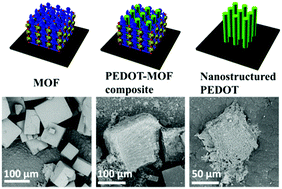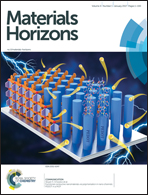Functional conductive nanomaterials via polymerisation in nano-channels: PEDOT in a MOF†
Abstract
Reactions inside the pores of metal–organic frameworks (MOFs) offer potential for controlling polymer structures with regularity to sub-nanometre scales. We report a wet-chemistry route to poly-3,4-ethylenedioxythiophene (PEDOT)–MOF composites. After a two-step removal of the MOF template we obtain unique and stable macroscale structures of this conductive polymer with some nanoscale regularity.

- This article is part of the themed collection: In celebration of Tony Cheetham’s 70th birthday


 Please wait while we load your content...
Please wait while we load your content...